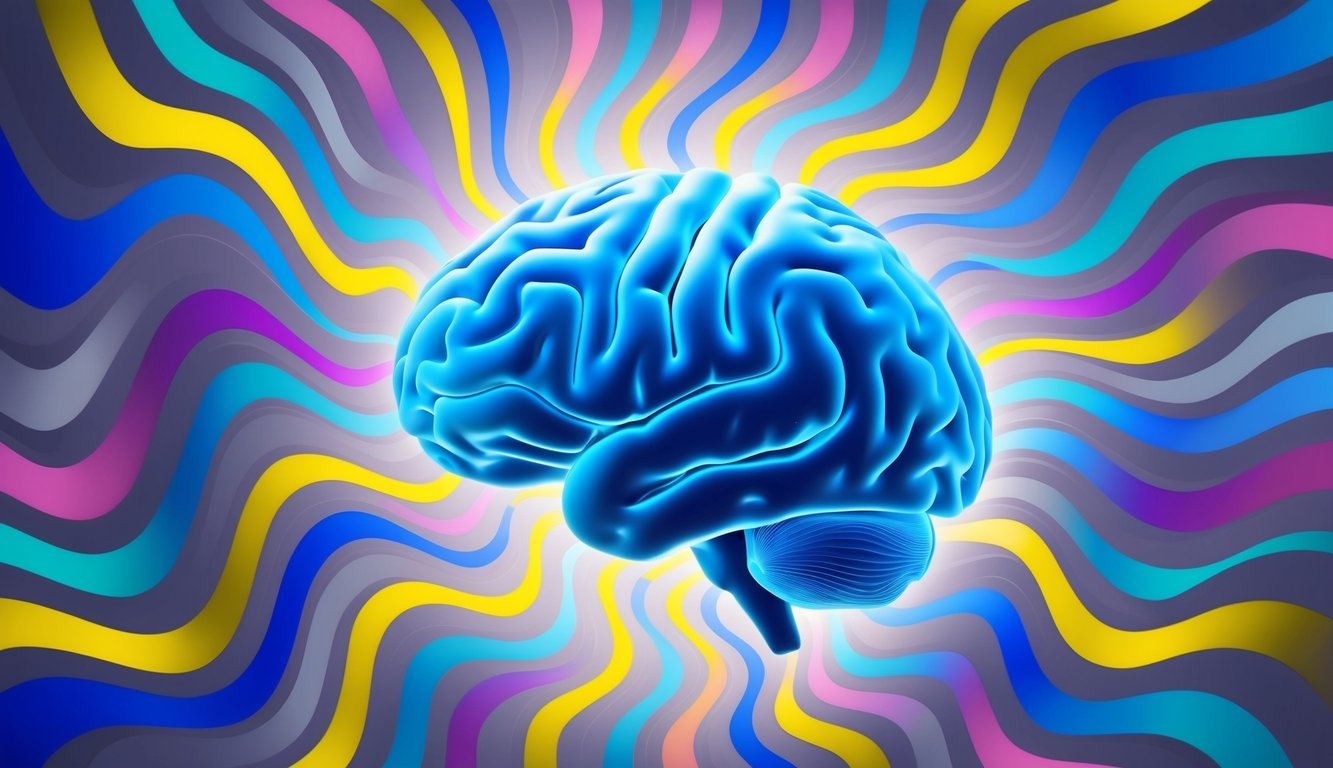PsychNewsDaily Publishers
100 Summit Drive
Burlington, MA, 01803
Telephone: (320) 349-2484
PsychNewsDaily Publishers
100 Summit Drive
Burlington, MA, 01803
Telephone: (320) 349-2484
REM sleep is essential for emotional processing, memory consolidation, and vivid dreaming, highlighting its critical role in mental health and overall sleep quality.

REM sleep plays a crucial role in the sleep cycle and is a key time for dreaming. During REM sleep, the brain shows high activity, similar to when a person is awake. This helps with emotional processing and supports healthy brain development. This stage of sleep is characterized by rapid eye movement, where the body becomes more relaxed, but the mind is actively engaged in dreaming.
The connection between REM sleep and dreaming is fascinating. Most vivid dreams occur during this period, often filled with strong emotions and creative scenarios. Understanding how REM sleep affects dreaming can lead to insights about brain activity and overall sleep quality.
People often underestimate the importance of REM sleep. It not only influences dreaming but also impacts heart rate and consciousness during sleep. Prioritizing REM sleep can lead to a refreshing night’s rest and promote better mental health.

Sleep involves different stages that the body and brain go through to rest and recharge. Each stage plays an important role in overall health and well-being. Recognizing these stages can help improve sleep quality and manage sleep disorders.
A typical sleep cycle lasts about 90 minutes and includes several stages. These cycles repeat throughout the night, with most people experiencing four to six cycles. The main stages are divided into Non-REM and REM sleep.
Non-REM Sleep
REM Sleep
This phase usually occurs about 90 minutes after falling asleep. During this time, the brain is very active, leading to vivid dreams. It plays a key role in memory consolidation and emotional regulation.
Non-REM (NREM) and REM sleep serve different functions. NREM sleep is generally split into three stages.
Light Sleep (Stage 1 and 2): During this time, heart rate slows, and breathing becomes regular. It’s the transition from wakefulness to sleep, preparing the body for deeper rest.
Deep Sleep (Stage 3): This is the most restorative phase. It’s more challenging to wake someone during this time, and the body does most of its healing. Deep sleep is essential for physical health and recovery.
In contrast, REM sleep focuses more on mental restoration. It’s when most dreaming occurs, and the brain is highly active, processing thoughts and experiences.
Deep sleep is a vital part of the sleep cycle. It helps the body recover from daily stressors and supports immune function. Lack of deep sleep can lead to issues like fatigue and difficulty concentrating.
Regular deep sleep contributes to improved mood and better overall health. It also helps with memory and learning, making it essential for children and adults.

REM sleep, or Rapid Eye Movement sleep, is a crucial part of the sleep cycle. It is known for its distinct features and significant effects on brain activity and overall health. This stage plays a key role in brain development, emotional well-being, and memory processing.
During REM sleep, the body experiences various unique characteristics. The most noticeable feature is rapid eye movement, which occurs behind closed eyelids. Dreams typically happen in this phase, and they can be vivid and emotionally intense.
In REM sleep, muscle tone is reduced. This condition, often called temporary paralysis, prevents individuals from acting out their dreams. Importantly, this state is essential for safety during vivid dream experiences.
Brain wave activity during REM sleep is distinct from other stages. The brain exhibits patterns similar to those observed during wakefulness. These waves are characterized by fast, low-amplitude signals.
Muscle tone during this phase is extremely low. This is essential for protecting the body. The temporary paralysis allows the brain to engage in dreaming without physical movements that could lead to injuries.
REM sleep differs between infants and adults. Infants experience a higher percentage of REM sleep than adults do. This is crucial for their rapid brain development and learning processes early in life.
As children grow, the proportion of REM sleep typically decreases. Adults generally spend about 20-25% of their total sleep time in this stage. Adequate REM sleep is vital for cognitive functions such as problem-solving and emotional regulation.

Dreams are fascinating experiences that occur during sleep, particularly in the REM stage. They can be vivid and emotional, offering insights into thoughts and feelings. Understanding dreams involves exploring their nature, how they help process emotions, and the intriguing phenomena of lucid dreaming and nightmares.
Dreams are often most intense during REM sleep. During this phase, brain activity increases, leading to vivid and sometimes bizarre experiences. People may recall elaborate dreams involving complex stories and emotions.
Research shows that about 80% of awakenings from REM sleep involve recalling dreams, while only about 10% occur in non-REM sleep. This difference highlights the importance of REM in dream formation.
The content of dreams can vary widely, reflecting personal experiences, fears, and desires. Each dream can serve as a window into someone’s subconscious mind.
Dreams play a crucial role in memory consolidation. During sleep, the brain processes and organizes new information, helping to store important memories. This process helps improve learning and recall.
Additionally, dreaming helps with emotional processing. Dreams can allow individuals to work through feelings and experiences from their waking life. This can be especially important after stressful or traumatic events.
By confronting fears and emotions in dreams, people may find relief or clarity when awake. This indicates the importance of dreams in maintaining emotional health.
Lucid dreaming occurs when an individual becomes aware that they are dreaming. This awareness allows them to take control of their dreams, influencing events within the dream. Some people practice techniques to induce lucid dreams, offering an exciting way to explore creativity and personal aspirations.
On the other hand, nightmares can be distressing and cause anxiety. They often involve frightening themes and can disrupt sleep. Exploring these nightmares may help individuals understand their underlying fears or concerns.
Both lucid dreams and nightmares demonstrate the diverse nature of the dream experience, showing how varied and complex dream activities can be.

REM sleep is a crucial part of the sleep cycle where dreaming occurs. Some people face disorders that disrupt this phase, affecting sleep quality and overall well-being.
The most recognized REM sleep disorder is REM Sleep Behavior Disorder (RBD). In this condition, individuals may physically act out dreams, leading to potential injury. Another disorder is narcolepsy, which causes excessive daytime sleepiness and can include REM sleep disturbances. Sleep apnea may also affect REM sleep by interrupting breathing, leading to fragmented sleep.
Other conditions, such as Parkinson’s disease and anxiety, can further complicate REM sleep. These disorders can cause disturbances that impact sleep patterns.
Symptoms of REM Sleep Behavior Disorder often include movements like kicking, punching, or talking during REM sleep. These actions can be startling and may lead to sleep disruption. Individuals often have vivid and sometimes unpleasant dreams.
Treatment options for RBD may include medications like clonazepam or melatonin, which can help reduce symptoms. Practicing good sleep hygiene is also vital. This includes maintaining a consistent sleep schedule and creating a comfortable sleep environment. In some cases, addressing underlying conditions like anxiety may help improve sleep quality.
Lifestyle choices greatly affect REM sleep and overall sleep health. Smoking and excessive alcohol consumption can disrupt normal sleep patterns. Both substances may reduce the time spent in REM sleep, leading to less restorative rest.
Incorporating good sleep hygiene practices is essential. This can include relaxing before bed and ensuring a dark, quiet room. Regular exercise can also improve sleep quality, promoting deeper sleep cycles.
Finally, managing stress and anxiety through techniques like meditation can further enhance REM sleep. All these factors work together to promote better sleep experiences.

Many people have questions about REM sleep and its role in dreaming. This section answers common inquiries about how REM sleep works, its effects, and what influences its occurrence.
REM sleep plays a vital role in feeling refreshed. During this stage, the brain is active, processing emotions and memories. This helps to improve mood and cognitive function.
Yes, it is possible to dream outside of REM sleep. Dreams can occur in other sleep stages, but they are usually less vivid. Most intense and memorable dreams happen during REM sleep.
Healthy REM sleep patterns include regular cycles of REM occurring several times a night. Individuals often wake up feeling rested and can easily recall dreams. Consistency in sleep schedules also supports healthy REM sleep.
Disruptions in REM sleep can lead to mood swings, anxiety, and difficulty concentrating. They may also heighten stress levels. Proper REM sleep is important for emotional regulation.
Certain practices can help increase REM sleep duration. Maintaining a consistent sleep schedule and creating a calm sleep environment are beneficial. Reducing alcohol and caffeine intake can also lead to better REM sleep.
REM sleep is unique because it has increased brain activity, rapid eye movements, and vivid dreaming. In contrast, non-REM sleep has stages that focus more on physical restoration and is characterized by slower brain waves. These differences illustrate the important roles each stage plays in overall sleep health.